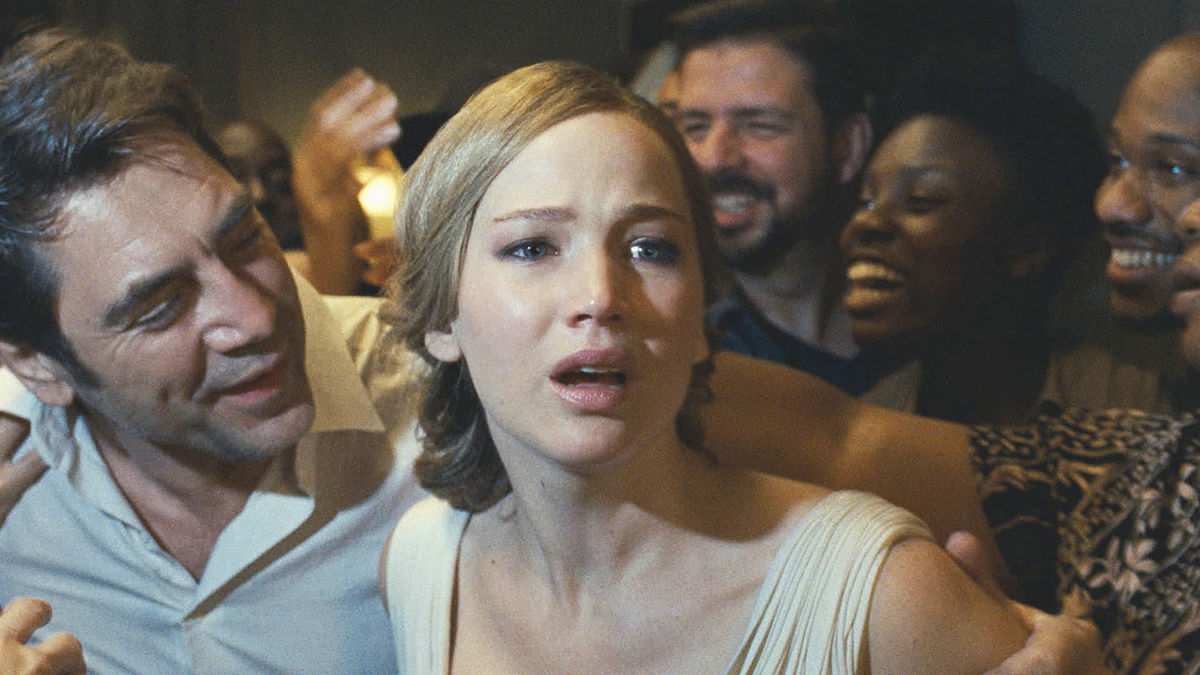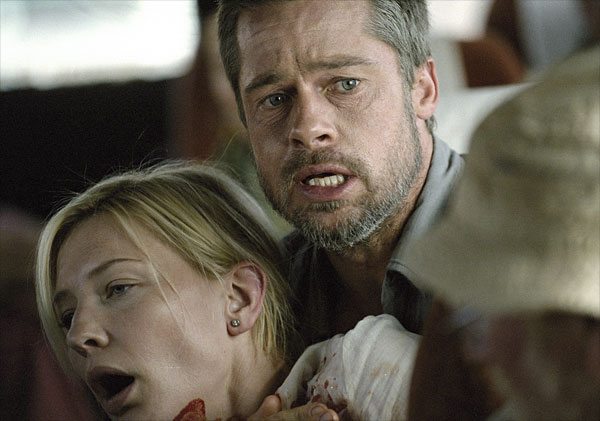
As far as online review aggregators for film goes, Rotten Tomatoes is perhaps the most revered, and has been for the last 20 years. The much dreaded Tomatometer, though not indicative of a film’s quality as is iMDB’s rating system per se, but rather, the percentage of critics, professional ones at that, who enjoyed that particular film. The innate problem with this system is the differing tastes of critics.
More often than not, a polarizing film considered by many to be a masterpiece, would have an unfavorable Tomatometer score due to the fact that more mainstream, blockbuster-geared critics seen it as compared to those more attuned to the arthouse. Additionally, a bad Tomatometer score would not only psychologically affect a critic’s rating, often causing an even greater drop in score than the film rightfully deserves, but due to the site’s popularity and reputation, might even deter audiences from watching the film to begin with.
These are 10 films with under 70% on Rotten Tomatoes that are completely undeserving of that degrading treatment.
10. May (RT Score: 69%)

May is a film that manages to be distinct in a ridiculously oversaturated genre of film, and not just because of some weak gimmick. The film is a character study on a woman with little to no social skills with a literal skewed perception of the world and how to function in it. Her peculiar nature eventually led to misinterpretations of multiple situations which play a part in shaping and defining her unique character arc.
Despite this film being a “horror” in the loosest sense of the genre, with no real jump scares or supernatural elements to it to whatsoever, the atmosphere of tension is established from the very first shot of the film, and it never relents from then. Every subsequent scene, no matter how tame, brings a sense of unease within the audience either through red herrings and subversions of horror tropes or the main actor’s amazing performance as a mentally disturbed individual with increasingly psychotic tendencies.
Overall, considering this film’s mixed reception, general obscurity and the fact that the director hasn’t done anything notable aside from other forgettable bargain bin horror films, the film does bring a surprisingly high level of quality to the table. The themes of love and image are surprisingly mature and well explored, with the final climax providing audience with a satisfying resolution to it all.
9. Spring Breakers (RT Score: 67%)

A pure and visceral sensory experience detailing, as the title suggests, Spring Breakers follow a group of teenagers on Spring Break. The film, very blatantly a satire exposing the superficialities of the millennial generation, is essentially what you would get if you were to cross the pseudo-philosophical style of Terrence Malick with Andrea Arnold’s powerful portrayal of hedonism, though the film is distinctly better than Malick’s later works, possessing a clear vision presented to audiences in an abstract manner.
Leaving aside discussion on the film’s nature as an allegorical satire, surprisingly enough, Spring Breakers still has a lot to offer on a surface level. Harmony Korine, a master in capturing hyperrealism, combines that same level of “trashiness” as in his earlier work, that hyperbolic sense of raw with stunning visuals with an amazing use of colours and light. This unique blend of stylization and disorientation combined with the abstract plot makes for a truly sensorial journey that embraces Spring Break in all its hedonistic glory – from the good to the bad, from the pretty to the ugly.
As with any other avant-garde films, especially with those with an inherently polarizing acclaim to begin with, it’s exceptionally difficult to pinpoint whether or not the film is garbage or art. However, eliminating the artistic value and appreciating it for what it is at face value, it’s a well-acted, well-shot, hilariously immersive experience.
8. The Neon Demon (RT Score: 58%)

Nicholas Winding Refn’s Neon Demon is by far his most divisive work, even more so than the rest of his already polarizing filmography. Though Only God Forgives, the film that immediately preceded Neon Demon was rightfully so, considering its ostentatious nature and the overall pretentious self-indulgence it exudes. The Neon Demon, though similar in a lot of ways to Only God Forgives, isn’t just merely a pretty video with no palpable story or substance to its name.
The Neon Demon takes a unique approach to the idea of the classic “Rags to Riches” tale. It’s one that literally bastardizes that idea in the most controversial yet brilliantly absurd way possible, which was probably the reason behind its polarizing acclaim. Cannibalism. Lesbianism. Exploitation. Necrophilia. All these concepts and so much more are explored in this insanely colorful thriller. The most insane part of it all? The main character, the central catalyst for these evocative themes, is meant to be a 16-year-old.
The film’s performances are all brilliant. The visuals are by far the greatest in any Refn film, finding a difficult balance between style and substance, resulting in a surreal, grandiose look to the film, perfectly complementing the crazy, with crazy. It’s a film that certainly knows entirely what it is and what it’s capable of and basks in that strength, resulting in an overall experience that’s self-reflexive and utterly insane.
7. Babel (RT Score: 69%)

Before he took cinema by storm with his 2014 meta masterpiece, Birdman, Alejandro Innaritu’s earlier works, mainly his Trilogy of Death, featured the same level of ambition and intensity as do his later films, albeit at a much smaller scale. Babel, the final film in the thematic trilogy, concludes his run of interweaving narratives in the most brilliant way possible. A great shame considering that most critics thought otherwise.
Much like Amores Perros and 21 Grams, Babel details three separate and seemingly distinct stories before they eventually converge – The story of a travelling couple, a domestic helper and a mute Japanese girl. What sets this film apart from the other two is the fact that these three stories are literally set in different continents altogether, but despite that fact, Innaritu still manages to masterfully interweave the 3 complex stories.
The film explores the idea of communication, and the lack thereof. This central theme propels the entire story forward, uniquely bringing together a seemingly farfetched sequence of events, only vaguely similar to one another by theme and convoluted plot points.
Despite all that, the end result is still something extremely coherent, with a seamless flow between one story to another, even if they occur at completely different time periods or continents. And of course, it culminates in an experience that’s undeniably heartfelt and impactful, with each story leaving equally strong impressions, all populated with their own equally interesting characters.
6. mother! (RT Score: 68%)

Even before its theatrical release, Aronofsky’s mother! received polarizing reviews, with critics struggling to agree whether it’s a needlessly controversial, incomprehensible mess of a film, or a film masking in a façade of symbolism in an attempt to amplify its own intelligence.
That quite frankly, just comes across as an unfair piece of criticism. Aronofsky set out to create less of a narrative and more of an allegorical piece. Sure, when it comes to the film’s story, it doesn’t strictly speaking make complete sense, but the build-up in terms of the development of events is stellar. Even without understanding the biblical references made by the film, on the surface, mother! provides a wild 2-hour ride filled with unrelenting and ever-increasing adrenaline and tension.
As for approaching the film on a more metaphorical level, though it is true that mother! isn’t really anything too nuanced or thought-provoking beyond a superficial level, the film’s faithfulness to its “source material” is remarkable, and making parallels to it as one watches the film is endlessly entertaining, especially so considering the depraved nature of the film’s narrative.
It’s undeniable that Aronofsky set out not to create something deeply philosophical, but to tell a traditional and classic story in the most jarring and theatrical of ways, a take that’s inarguably fresh and unique. And he more than succeeded in doing just that.